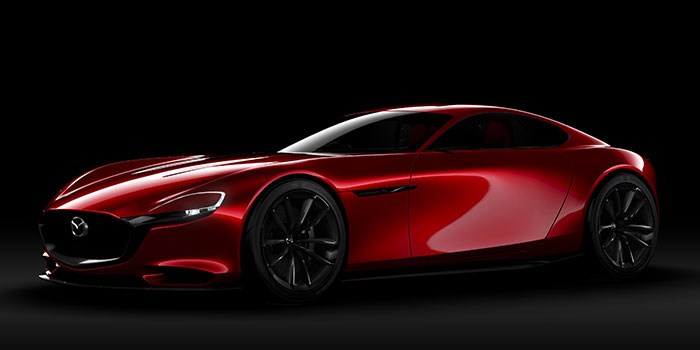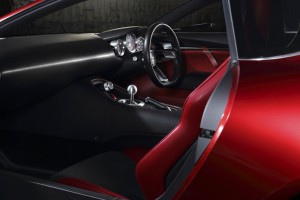 Mazda Motor Corporation unveiled the rotary-powered Mazda RX-VISION sports car concept at the Tokyo Motor Show recently.
Mazda Motor Corporation unveiled the rotary-powered Mazda RX-VISION sports car concept at the Tokyo Motor Show recently.
RX-VISION represents a vision of the future that Mazda hopes to one day make into reality: a front-engine, rear-wheel-drive sports car with exquisite, KODO design-based proportions and powered by the next-generation SKYACTIV-R rotary engine.
Rotary engines feature a unique construction, generating power through the rotational motion of a triangular rotor. Overcoming numerous technical difficulties, Mazda succeeded in commercializing the rotary engine, fitting it in the Cosmo Sport (known as Mazda 110S overseas) in 1967. As the only automaker to mass-produce the rotary engine, Mazda continued efforts to improve power output, fuel economy and durability, and in 1991 took overall victory at 24 Hours of Le Mans with a rotary engine-powered race car. Over the years, the rotary engine has come to symbolize Mazda’s creativity and tireless endeavor in the face of difficult challenges.
RX-VISION’s styling is modern, but maintains a sense of lineage and authenticity, encapsulating Mazda’s entire history of sports car design. A low and wide body, short overhangs and taut cabin make the model immediately recognizable as a sports car. These elements combine with the low overall height and incredibly low hood made possible by the compact and lightweight next-generation SKYACTIV-R rotary engine to create one-of-a-kind proportions.
For the interior, intricate instruments give the cockpit a true machine appeal, which in combination with the simple instrument panel and genuine leather trim with a saddle motif for the center tunnel create an interior atmosphere that speaks of handcrafted warmth and quality yet maintains a sense of tension.
Source: MazdaUSA.com















